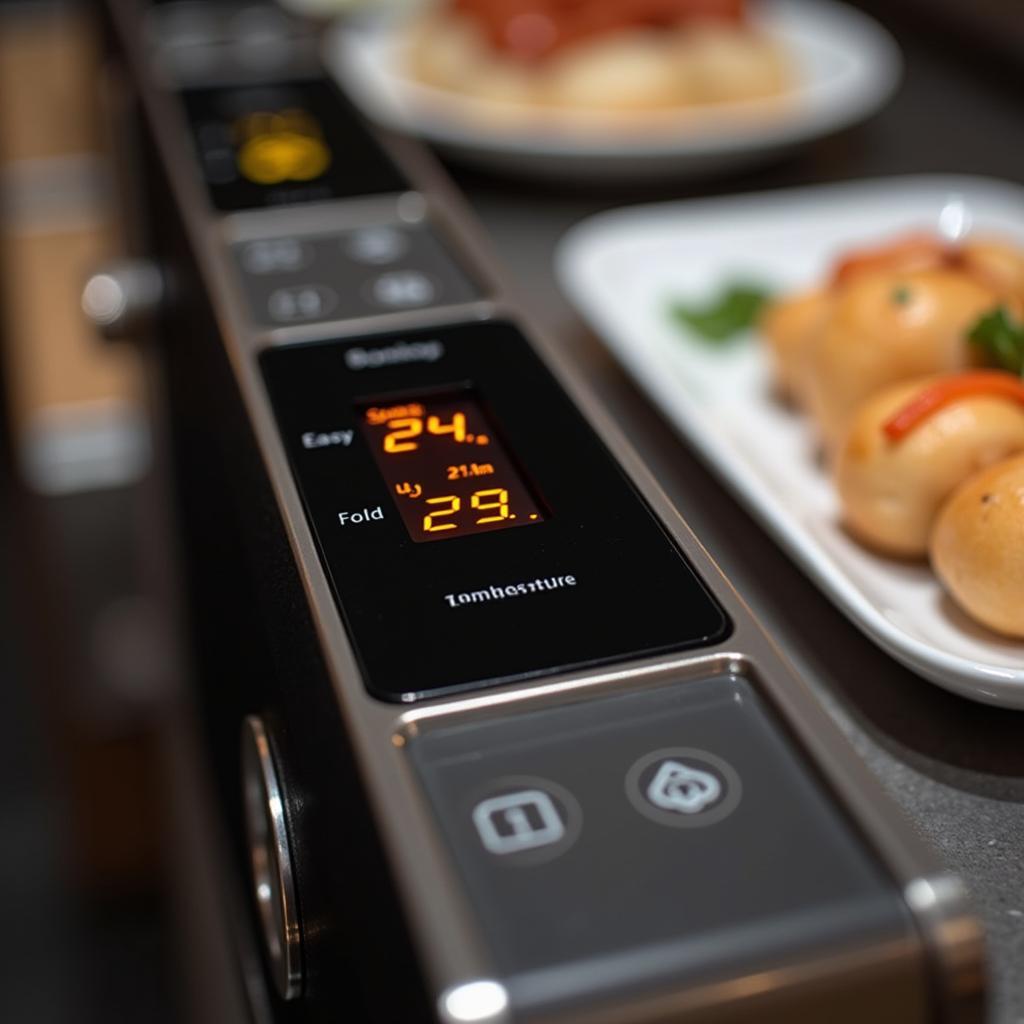Hot Food Displays are more than just functional equipment; they’re an art form, a silent invitation, a promise of deliciousness. In the world of culinary presentation, they hold the power to elevate the ordinary to the extraordinary, transforming a simple meal into a captivating experience. From bustling buffets to intimate cafes, these heated showcases play a vital role in keeping food at optimal temperatures while enticing customers with visually appealing arrangements. Let’s delve into the world of hot food displays and discover the secrets to maximizing their impact.
The Art of Display: Choosing the Right Hot Food Display
Selecting the perfect hot food display is crucial for any food service establishment. Consider the type of food you’re serving. Moist heat is ideal for delicate items like steamed vegetables and dumplings, while dry heat is better suited for crispy fried foods or roasted meats. Size and capacity are also key factors, as is the overall aesthetic. A sleek, modern display can complement a contemporary setting, while a more traditional design might be a better fit for a classic diner. Do you need a food warmer and display?
Maintaining Food Quality: Temperature and Presentation
 Digital temperature control on a hot food display unit
Digital temperature control on a hot food display unit
Maintaining the correct temperature is paramount when using hot food displays. Too low, and your food risks becoming a breeding ground for bacteria; too high, and you risk drying it out or overcooking it. Consistent monitoring is essential, and many modern displays come equipped with digital thermostats for precise control. Just as important as temperature is presentation. Arrange your food strategically, creating visual appeal through color, texture, and height. Garnishes and labels can further enhance the presentation, adding a touch of elegance and professionalism.
Creating Visual Appeal: Tips and Tricks for an Enticing Display
- Color Coordination: Use a variety of colors to create a vibrant and appealing display. Think about contrasting colors and complementary hues to draw the eye.
- Texture Play: Mix and match textures to add depth and interest. Combine smooth sauces with crunchy toppings, or pair soft breads with crisp vegetables.
- Height Variation: Create a dynamic display by using different heights. Elevate some items on stands or platters to create visual layers.
- Garnishing: A simple garnish can transform a dish. Fresh herbs, edible flowers, or a sprinkle of spice can add a touch of elegance.
- Labeling: Clearly label each dish to inform customers and prevent confusion.
What are the Different Types of Hot Food Displays?
There’s a hot food display for every need. Countertop models are perfect for smaller cafes or delis, while larger buffet-style units are ideal for catering events or large restaurants. Portable displays are a great option for outdoor events or mobile food vendors. Understanding the different types available can help you choose the perfect fit for your business. You can find out more about our food tray for catering. Need to spruce up your food cart? Check out our selection of food cart signage.
“Choosing the right hot food display is an investment in your business,” says renowned chef, Amelia Patterson. “It’s not just about keeping food warm; it’s about presenting it in a way that entices customers and enhances their dining experience.”
Hot Food Displays: A Smart Investment for Your Business
Investing in quality hot food displays can significantly impact your bottom line. By showcasing your food in an attractive and appealing manner, you can encourage impulse purchases and increase sales. Furthermore, maintaining the correct temperature ensures food safety and reduces waste, ultimately saving you money.
“A well-maintained hot food display is a silent salesperson,” adds culinary consultant, David Lee. “It speaks volumes about the quality of your food and your commitment to customer satisfaction.”
Conclusion: Elevating Your Culinary Presentation with Hot Food Displays
Hot food displays are an essential tool for any food service business looking to enhance their culinary presentation and maximize their impact. By carefully considering factors like temperature control, presentation techniques, and choosing the right type of display, you can create a visually stunning and appetizing experience that will leave a lasting impression on your customers. Consider the food smith menu for inspiration on how to display your dishes.
FAQs
-
What is the ideal temperature range for a hot food display? The ideal temperature range is typically between 140°F and 165°F (60°C and 74°C).
-
How do I clean a hot food display? Always follow the manufacturer’s instructions. Generally, you’ll need to turn off and unplug the unit before cleaning it with a mild detergent and warm water.
-
What are the different heating methods used in hot food displays? Common heating methods include dry heat, moist heat, and infrared heating.
-
What materials are hot food displays typically made of? Stainless steel is a popular choice due to its durability and ease of cleaning.
-
How can I prevent food from drying out in a hot food display? Proper humidity control and covering the food with lids or wraps can help prevent drying.
-
Are there portable hot food display options? Yes, there are portable models available that are ideal for catering events or mobile food vendors.
-
What should I consider when choosing the size of a hot food display? Consider the volume of food you typically serve and the space available in your establishment.
Other Questions You Might Have
- What are the best practices for food safety when using hot food displays?
- How can I use lighting to enhance the presentation of my food in a hot food display?
- What are the latest trends in hot food display technology?
For more information on related topics, you might be interested in our articles on food warmer and display and food art on canvas.
Need Assistance?
Contact us for 24/7 support!
Phone: 02437655121
Email: minacones@gmail.com
Address: 3PGH+8R9, ĐT70A, thôn Trung, Bắc Từ Liêm, Hà Nội, Việt Nam.